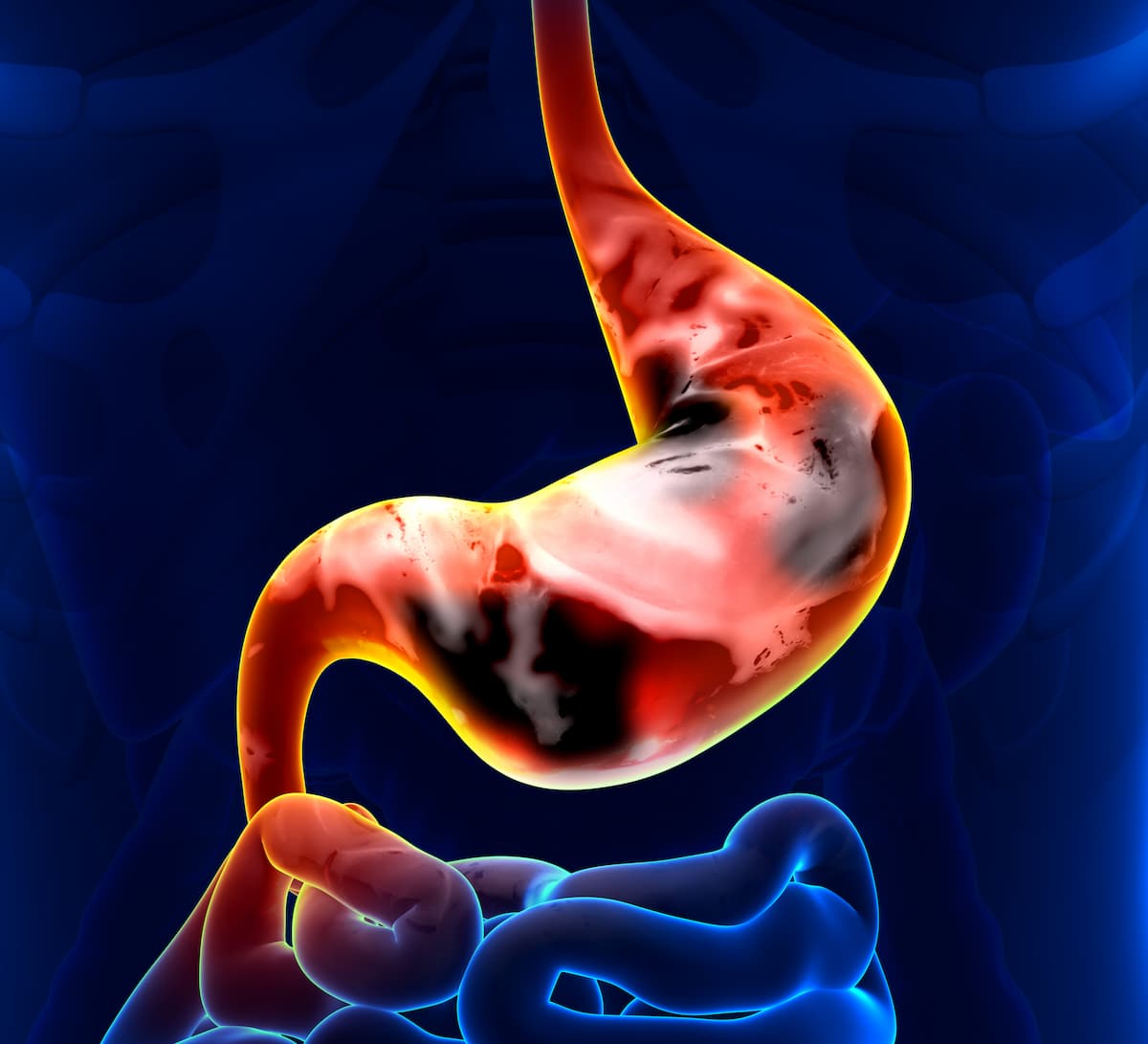FDA Gives Priority Review to Zolbetuximab in Advanced Gastric Cancer
The FDA sets a Prescription Drug User Fee Act date of January 12, 2024 for the biologics license application for zolbetuximab in the management of Claudin 18.2-positive advanced gastric or gastroesophageal junction adenocarcinoma.
Supporting data for the BLA for zolbetuximab came from the phase 3 SPOTLIGHT trial (NCT03504397) and the phase 3 GLOW trial (NCT03653507).

A biologics license application (BLA) for zolbetuximab (IMAB362) in the frontline treatment of patients with Claudin 18.2 (CLDN18.2)–positive, locally advanced, unresectable or metastatic, HER2-negative gastric or gastroesophageal junction (GEJ) adenocarcinoma has received priority review from the FDA, according to a press release from Astellas Pharma Inc.1
The regulatory agency has set a Prescription Drug User Fee Act date of January 12, 2024 to make its decision on the BLA for zolbetuximab. The potential approval would make zolbetuximab the first available CLDN18.2-targeting therapy in the United States for this patient population.
“The FDA’s acceptance of the [BLA] filing and priority review designation for zolbetuximab confirms the urgent therapeutic need and brings us one step closer to delivering on this commitment to patients, families and caregivers,” Moitreyee Chatterjee-Kishore, PhD, MBA, senior vice president and head of Immuno-Oncology Development at Astellas, said in the press release.
Supporting data for the BLA came from the phase 3 SPOTLIGHT trial (NCT03504397)and the phase 3 GLOW trial (NCT03653507).
In the SPOTLIGHT trial, investigators reported a median progression-free survival (PFS) of 10.61 months (95% CI, 8.90-12.48) following treatment with zolbetuximab compared with 8.67 months (95% CI, 8.21-10.28) following placebo (HR, 0.75; 95% CI, 0.60-0.94; P = .0066).2 Additionally, the estimated 12-month PFS rates in each respective arm were 49% (95% CI, 42%-55%) compared with 35% (95% CI, 28%-42%), and the estimated 24-month rates were 24% (95% CI, 17%-32%) vs 15% (95% CI, 9%-22%).
As of the data cutoff of October 7, 2022 for the GLOW trial, zolbetuximab in combination with capecitabine and oxaliplatin (CAPOX) produced a median PFS of 8.21 months (95% CI, 7.46-8.84) vs 6.80 months (95% CI, 6.14-8.08) with placebo plus CAPOX (HR, 0.687; 95% CI, 0.544-0.866; P = .0007). Investigators reported a 12-month PFS rate of 35% vs 19%, and a 24-month rate of 14% vs 7%, respectively.3
Investigators of the global, randomized phase 3 SPOTLIGHT study assessed patients with CLDN18.2-positive, HER2-negative, locally advanced unresectable or metastatic gastric or GEJ adenocarcinoma at 215 centers across 20 countries. Patients were randomly assigned to receive 800 mg/m2 of intravenous zolbetuximab on day 1 of cycle 1 and 600 mg/m2 on day 22 of cycle 1 plus modified folinic acid, fluorouracil, and oxaliplatin (mFOLFOX6) or placebo plus mFOLFOX6.
The primary end point of the SPOTLIGHT study was PFS. Secondary end points included overall survival (OS), objective response rate (ORR), duration of response, and safety.
In the global, double-blind, randomized phase 3 GLOW trial, patients with previously untreated locally advanced unresectable or metastatic gastric or GEJ adenocarcinoma were randomly assigned to one of 2 treatment arms. In the experimental arm, patients received 800 mg/m2 of intravenous zolbetuximab on day 1 of cycle 1 followed by 600 mg/m2 on day 1 of subsequent cycles once every 3 weeks plus CAPOX, and then 600 mg/m2 of zolbetuximab intravenously every 3 weeks plus capecitabine on cycle 9 and onwards. In the comparator arm, patients received matched placebo in combination with CAPOX.
The primary end point of the GLOW trial was PFS. Secondary end points included OS, ORR, time to confirmed deterioration, and safety.
Approximately 38% of patients screened for the GLOW and SPOTLIGHT trials collectively had CLDN18.2-positive tumors based on assessment with an immunohistochemistry assay.
In the SPOTLIGHT trial, grade 3 or higher treatment-emergent adverse effects (TEAEs) occurred among 87% of those in the zolbetuximab arm compared with 78% of those in the placebo arm. The most common toxicities included nausea, vomiting, and decreased appetite.
In the GLOW trial, the most common any-grade TEAEs in the zolbetuximab and placebo arms, respectively were nausea in 68.5% compared with 50.2% and vomiting in 66.1% compared with 30.9%. Grade 3 or higher nausea occurred in 8.7% and 2.4% of patients in each arm, and grade 3 or higher vomiting occurred in 12.2% and 3.6%.
References
- Astellas announces U.S. FDA grants priority review for zolbetuximab biologics license application. News release. Astellas Pharma Inc. July 6, 2023. Accessed July 6, 2023. https://shorturl.at/egzU1
- Shitara K, Lordick F, Bang YJ, et al. Zolbetuximab plus mFOLFOX6 in patients with CLDN18.2-positive, HER2-negative, untreated, locally advanced unresectable or metastatic gastric or gastro-oesophageal junction adenocarcinoma (SPOTLIGHT): a multicentre, randomised, double-blind, phase 3 trial. Lancet. Published online April 14, 2023. doi:10.1016/S0140-6736(23)00620-7
- Xu R, Shitara K, Ajani JA, et al. Zolbetuximab + CAPOX in 1L claudin-18.2+ (CLDN18.2+)/HER2− locally advanced (LA) or metastatic gastric or gastroesophageal junction (mG/GEJ) adenocarcinoma: primary phase 3 results from GLOW. J Clin Oncol. 2023;41(suppl 36):405736. doi:10.1200/JCO.2023.41.36_suppl.405736
FDA Accepts BLA for Tislelizumab/Chemo in Gastric/GEJ Adenocarcinoma
February 27th 2024Data from the phase 3 RATIONALE 305 trial support the biologics license application for tislelizumab plus chemotherapy in advanced unresectable or metastatic gastric or gastroesophageal junction adenocarcinoma.
Sintilimab Combo Shows Modest Efficacy, Safety in HER2– Gastric/GEJ Cancer
February 18th 2024Over half of the patients with HER2-negative gastric or gastroesophageal junction adenocarcinoma achieve a major pathological complete response following treatment with sintilimab plus FLOT in a phase 2 trial.
Fruquintinib/Paclitaxel Improves PFS, ORR in Gastric/GEJ Adenocarcinoma
February 7th 2024Findings from the FRUTIGA study support fruquintinib plus paclitaxel as a promising second-line treatment for those with advanced gastric or gastroesophageal junction adenocarcinoma following prior chemotherapy.